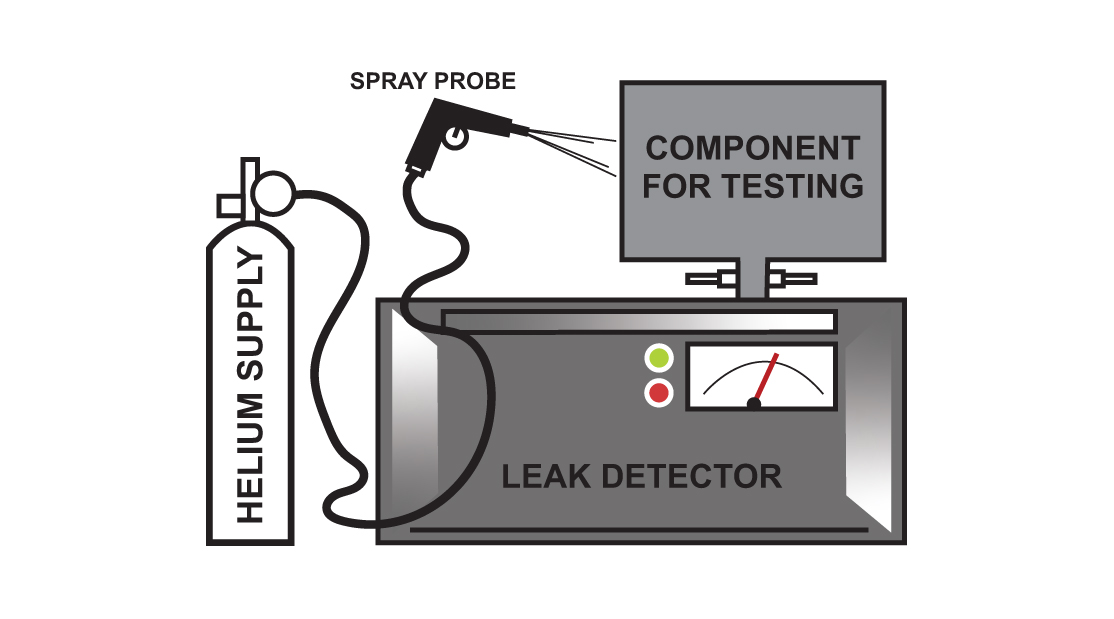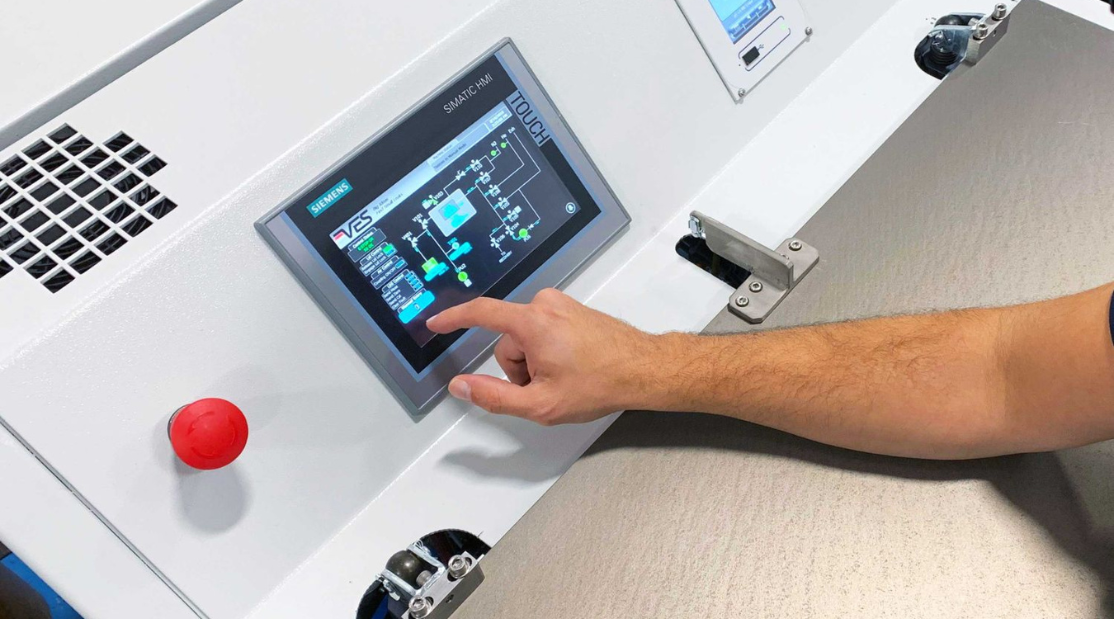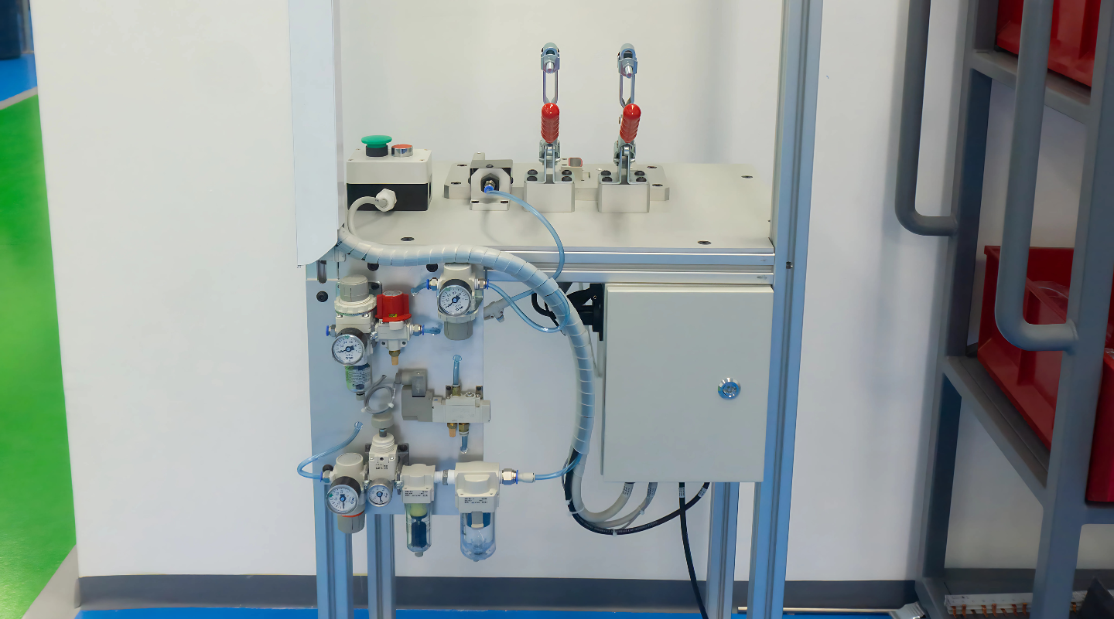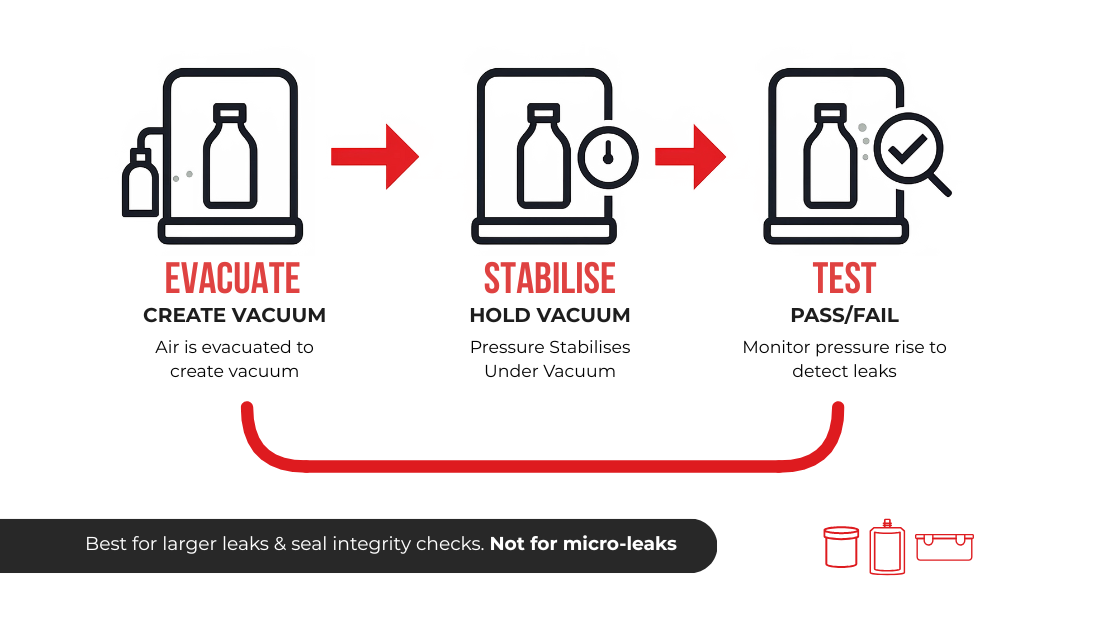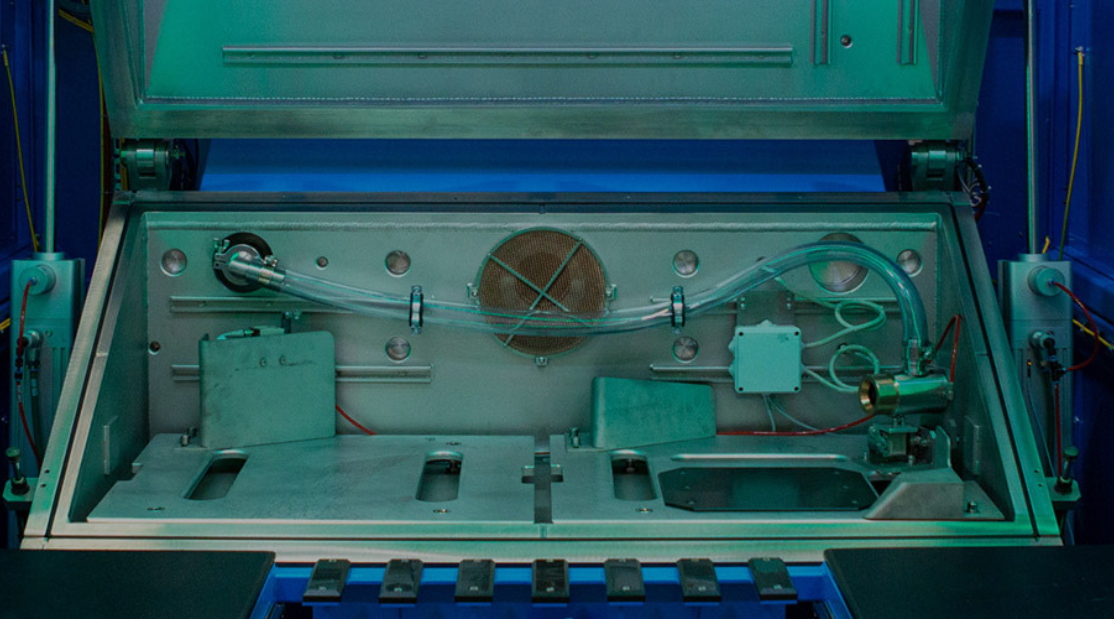When it comes to leak detection, precision and reliability are essential. Whether you’re working with large automotive parts or smaller, intricate components, finding leaks quickly and accurately can make a huge difference in product performance and safety. Two of the most widely used methods for helium leak testing are sniff testing and spray testing. While both use helium as a tracer gas to detect leaks, they each have unique advantages depending on the situation. In this article, we’ll take a closer look at both methods and help you figure out which one is best suited for your needs.
What is Sniff Testing?
Sniff testing systems use helium as a tracer gas to detect leaks in products that may be too large to fit inside a test chamber. This technique is commonly used when it’s not feasible to perform a more traditional vacuum chamber or accumulation test, often because of the size or shape of the component being tested. Sniff testing involves using a portable mass spectrometer to “sniff” the air around the test item for escaping helium.
One of the key advantages of sniff testing is its flexibility. Since it doesn’t require a test chamber, it’s ideal for large or awkwardly shaped components that cannot easily be tested in more traditional setups. Sniff testing is also beneficial when the location of the leak needs to be identified and repaired on-site. The portable nature of the equipment allows technicians to move around the part, pinpointing the exact location of the leak and performing immediate repairs if necessary. This makes sniff testing an excellent option for real-time troubleshooting and fieldwork.
What is Spray Testing?
Spray testing systems, on the other hand, work by spraying helium over the surface of a part, which is typically evacuated beforehand. In this method, the part under test is usually placed in a controlled environment where the helium is introduced to check for leaks. The spray technique is particularly useful for parts where gas ingress is a significant concern, such as those used in high-pressure applications or in situations where contamination from outside sources could impact the test.
The primary advantage of spray testing is its ability to cover a large area uniformly and detect leaks at specific locations that are likely to be prone to leaks, such as seams, joints, or welds. By spraying the helium directly over the part, you can target specific areas where leaks are more likely to occur, making this a highly efficient method when you need to find leaks in complex geometries or parts with multiple potential failure points.
Spray testing systems are especially valuable for testing smaller components or parts that can be easily positioned in a chamber or controlled environment. The precision of the spray application ensures that the gas is introduced in a controlled manner, making it easier to identify even the smallest leaks quickly and accurately. Additionally, spray testing can often be integrated with automated systems, allowing for faster and more consistent results during production runs.
Key Differences Between Sniff and Spray Testing Systems
Now that we have a basic understanding of both methods, let’s take a look at some of the key differences between sniff testing and spray testing systems.
1. Applicability to Component Size
The most significant difference between the two methods lies in the size and type of components that can be tested. Sniff testing is ideal for larger, irregularly shaped items that cannot fit inside a test chamber. It’s also great for testing items that are located in difficult-to-reach places or items that need to be repaired immediately once a leak is found. Spray testing, on the other hand, is more suitable for smaller components or parts that can be placed inside a controlled environment for testing.
2. Leak Location Detection
Sniff testing is highly effective at pinpointing the exact location of a leak. Since the mass spectrometer is used to “sniff” around the test part, it can detect the escaping helium at various points along the surface, helping technicians quickly locate the source of the leak. Spray testing, while still capable of detecting leaks, is better suited for finding leaks in specific areas that are sprayed with helium. It may not be as effective in pinpointing the exact location of a leak unless the technician is able to closely observe the part as the helium is applied.
3. Speed and Efficiency
Spray testing systems are typically faster than sniff testing systems when it comes to testing parts with large surface areas. The ability to spray helium evenly over the part and quickly identify leaks makes it a highly efficient method for high-volume testing. On the other hand, sniff testing is generally slower, as it involves manually moving the spectrometer around the part to locate and identify leaks. While sniff testing is incredibly accurate, it can take more time to complete than spray testing, especially for larger items.
4. Flexibility and Mobility
Sniff testing systems are portable and can be used in a wide variety of settings. Whether it’s testing large equipment in a factory or identifying leaks in the field, sniff testing allows technicians to move the equipment as needed to conduct tests anywhere. Spray testing, however, requires a more controlled environment to be effective. The parts need to be placed in a chamber or a similar setting where the spray can be applied evenly, which may not always be convenient for on-site testing.
5. Use Cases
Spray testing is best for components where the risk of gas ingress is high or when it’s necessary to detect leaks in specific joints, seams, or other weak points in the material. It’s particularly useful in high-pressure applications and smaller parts where accuracy and speed are critical. Sniff testing, by contrast, is best suited for larger, more complex components or products where immediate leak location identification is required, such as testing automotive parts or gas tanks in the field.
Which One is Right for You?
The decision between sniff testing and spray testing ultimately depends on the size and type of components being tested, the environment in which the test is taking place, and the specific needs of your operation. If you’re working with large or complex components and need to locate leaks in real-time, sniff testing may be the better choice. If you’re testing smaller components in a controlled environment and need speed and accuracy, spray testing could be more appropriate.
At VES, we offer both sniff and spray testing systems, tailored to your specific requirements. Whether you need a flexible, portable solution for on-site testing or a fast, efficient method for high-volume testing, we’re here to provide the leak detection solutions that best fit your needs.
